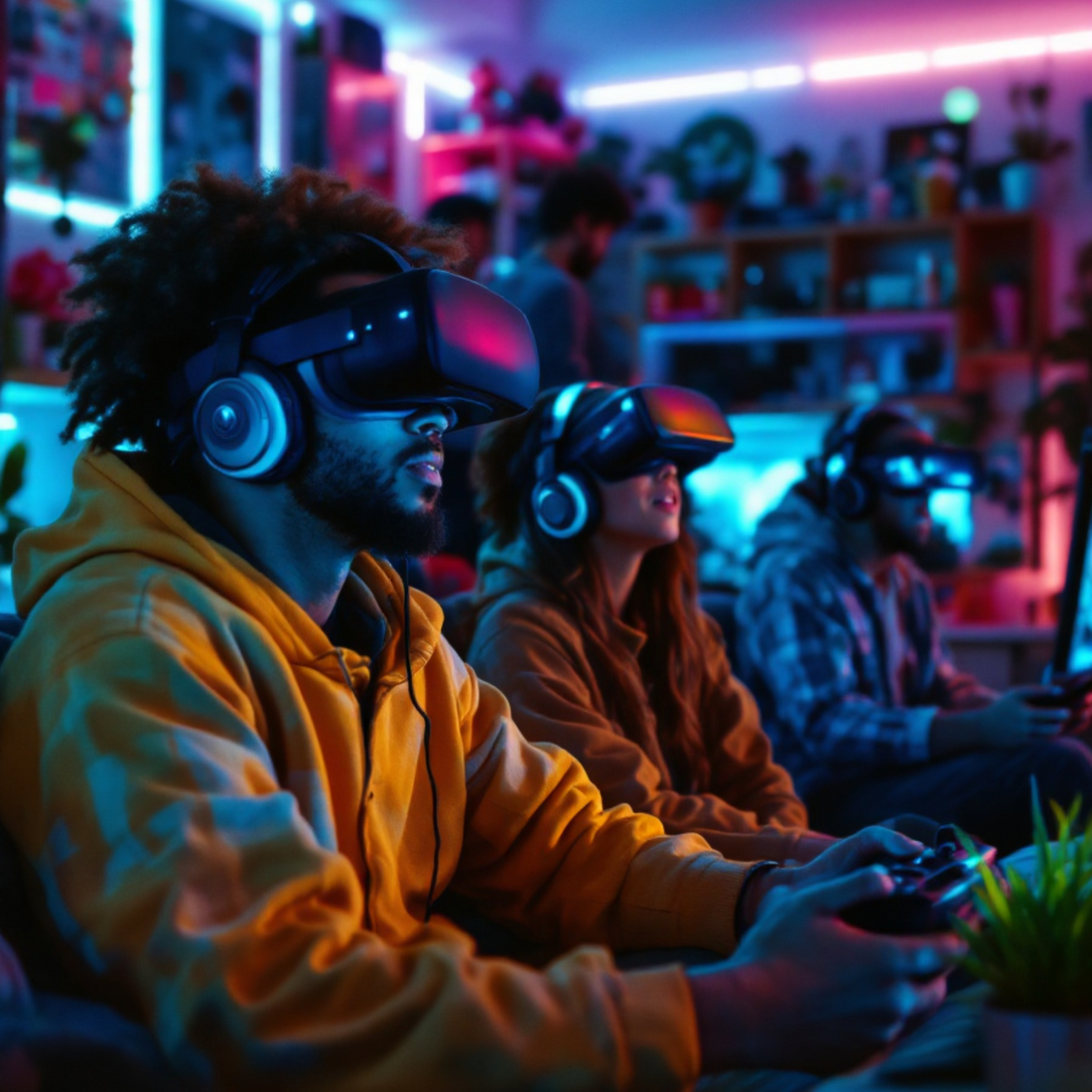The Evolution of AI in Gaming: From Pixels to Prodigies
Artificial Intelligence (AI) has been the secret sauce behind some of the most iconic moments in gaming history. Whether it’s the way enemies adapt to your playstyle or how NPCs (non-playable characters) feel like real companions, AI has transformed gaming into an immersive, dynamic experience. But how did we get here? Let’s take a journey through time to explore the evolution of AI in gaming, from its humble beginnings to its cutting-edge applications today.
The Dawn of Gaming AI: Simple Rules, Big Impact
Back in the early days of gaming during the 1970s and 1980s, AI was rudimentary but effective. Games like Pong (1972) and Space Invaders (1978) introduced basic rule-based systems where enemy behaviors were pre-programmed. For example:
- In Pong, the computer-controlled paddle simply moved up or down to intercept the ball.
- Space Invaders featured enemies that moved in predictable patterns but sped up as you eliminated them—a clever way to simulate increasing difficulty.
These early systems weren’t “intelligent” by today’s standards but laid the groundwork for AI as a core element of gameplay.
Key Milestone: Pac-Man (1980)

One of the first games to showcase more sophisticated AI was Pac-Man. The ghosts—Blinky, Pinky, Inky, and Clyde—each had unique behaviors:
- Blinky aggressively chased Pac-Man.
- Pinky tried to ambush him by predicting his movements.
- Inky combined Blinky's position and Pac-Man's location for a hybrid strategy.
- Clyde alternated between chasing Pac-Man and wandering randomly.
This diversity made each ghost feel distinct, adding depth and replayability to the game.
The Rise of Adaptive AI: Learning Your Moves
As gaming hardware improved during the late 1980s and 1990s, developers began experimenting with more adaptive AI systems. Instead of following rigid rules, game characters could now react dynamically to player actions.
Fighting Games: Street Fighter II (1991)
In Street Fighter II, opponents analyzed your playstyle and adapted their tactics accordingly. For instance, if you spammed a particular move, the AI would counter it more effectively over time. This marked a shift toward creating opponents that felt less predictable and more challenging.
Stealth Games: Thief: The Dark Project (1998)
The stealth genre also pushed AI boundaries. In Thief, guards had awareness levels—hearing footsteps or spotting shadows would make them suspicious. If they fully detected you, they’d sound alarms or hunt you down. This level of environmental interaction made players feel like they were navigating a living world.
The Golden Age of Companion AI: Emotional Connections
By the early 2000s, developers began focusing on creating believable companions who could fight alongside you or enrich the story with their personalities.
Halo: Combat Evolved (2001)
The Covenant enemies in Halo were some of the first to exhibit squad-based tactics. Grunts would flee if their leaders were killed, while Elites coordinated attacks. This made battles feel more organic and less scripted.
Half-Life 2 (2004): Alyx Vance

Alyx Vance became one of gaming’s most beloved NPCs thanks to her lifelike animations and emotional depth. She wasn’t just there for exposition—she actively helped players solve puzzles and fight enemies, making her feel like a true partner rather than a tagalong.
Procedural Generation and Emergent Gameplay
AI took another leap forward with procedural generation—a technique where algorithms create game content on-the-fly rather than relying on pre-designed levels.
Minecraft (2011)
Minecraft is a prime example of procedural generation done right. Its infinite worlds are generated using algorithms that ensure variety while maintaining logical terrain structures. The game’s mobs (like Creepers) also have simple yet effective AI behaviors that keep players on their toes.
No Man’s Sky (2016)
Taking procedural generation to cosmic levels, No Man’s Sky used algorithms to create an entire universe with billions of unique planets. Each planet’s flora, fauna, and ecosystems are governed by AI systems that simulate realistic interactions.
AI as Storyteller: Narrative-Driven Experiences
In recent years, AI has become a key player in crafting personalized narratives that adapt based on player choices.
The Elder Scrolls V: Skyrim (2011)
Skyrim’s Radiant Quest system uses AI to generate side quests tailored to your actions and relationships within the game world. This ensures no two playthroughs are exactly alike.
Detroit: Become Human (2018)

Quantic Dream’s Detroit: Become Human pushed narrative-driven AI further by offering branching storylines where every choice impacts the outcome. The game’s characters remember your decisions, leading to emotionally charged moments that feel uniquely yours.
Revolutionizing Multiplayer with Machine Learning
Machine learning—a subset of AI—has opened up new possibilities for multiplayer gaming by enabling smarter matchmaking systems and even teaching bots how to play like humans.
OpenAI Five vs Dota 2 Pros
In 2018, OpenAI developed bots capable of defeating professional players in Dota 2. These bots used reinforcement learning to master complex strategies through trial and error, showcasing how machine learning can rival human ingenuity.
Smarter Matchmaking
Games like Fortnite and Call of Duty: Warzone now use machine learning algorithms to analyze player skill levels and create balanced matches. This ensures fair competition while keeping players engaged longer.
The Future of Gaming AI: What’s Next?
As we look ahead, several exciting trends are shaping the future of AI in gaming:
- Generative AI: Tools like ChatGPT could enable NPCs with natural language capabilities, allowing players to have unscripted conversations.
- Personalized Experiences: Imagine games that adapt entirely to your preferences—changing difficulty levels, story arcs, or even art styles based on your behavior.
- AI Game Masters: Inspired by tabletop RPGs like Dungeons & Dragons, future games might feature AI-driven dungeon masters who create dynamic campaigns tailored to your party.
- Ethical Considerations: As AI becomes more advanced, developers will need to address ethical questions about data usage, player manipulation, and creating inclusive experiences.
Final Thoughts
AI has come a long way from controlling simple pixelated paddles in Pong to orchestrating vast procedurally generated universes in games like No Man’s Sky. It has not only enhanced gameplay mechanics but also deepened our emotional connections with virtual worlds and characters. As technology continues to evolve, one thing is clear: the future of gaming will be powered by increasingly intelligent systems that blur the line between reality and imagination.What excites you most about AI in gaming? Let me know in the comments below—I’d love to hear your thoughts!




